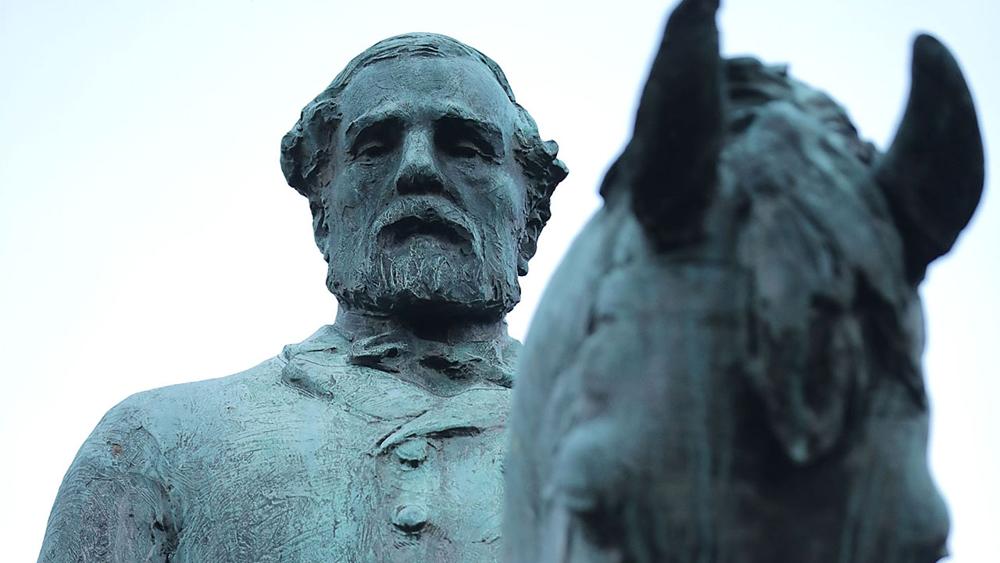
Charles Fremont “Pruner” West 
Paul Robeson 
John W. Heisman
Chapter One:
Pruner
Charles Fremont “Pruner” West possessed a talent for taking what he had and stretching it a little further. His sister Ethel first noticed this with cough drops. Their father, William West, sold chickens in Burgettstown, Pennsylvania. Upon his return, he often gave his children pink and white lozenges. Like sapphires and diamonds, Charles stored the precious candies afterward.
Pennsylvania had quite the selection of medicinal confections for a boy to enjoy on a slow summer day. One could purchase Mulford Aromatics Lozenges of Philadelphia, Johnson’s Throat Lozenges of Martinsburg — “much used by singers and public speakers,” or Mearig Throat Lozenges from New Holland — mixed with sugar, peppermint, and “not more than half the minim of chloroform when made.” A kid could find himself in candy heaven.
“One time a couple of weeks after we’d been given our mints, I smelled mint on Charley’s breath,” Ethel said, years later. “‘What are you eating?’ I asked him, thinking maybe I had been left out of a new distribution. ‘Why the mints we got a couple weeks ago,’ he confided. ‘Can I have one?’ I begged. ‘Sure,’ he said, and gave me a little piece. He had cut all his into fourths.’”[i]
If you’re a kid today, you live in a time when your most prized position would be a PlayStation 5, a smartphone, or a tablet with the coolest apps imaginable. The highlight of your day would be checking your Instagram or sharing the latest viral video on YouTube.
However, imagine you’re a kid at the beginning of the 20th century, and cough drops were the most prized possession in your pocket. Social media was the newspaper you held in your hands, and one of the things you shared with your friends were arrowheads dug from the ground, reminding you that Native Americans roamed the land years before your family did. If you were poor, your possibilities were limited; if you were poor and African American, your possibilities were nearly unattainable. That was Charles’ world.
Born on January 25th, 1899, to William and Hannah West, Charles was the third of their four children. Straddling the 19thand 20th centuries, that month the word “automobile” first appeared in a New York Times editorial. Walter Camp published his first College Football All-American Team in Collier’s Weekly magazine. And the United States liberated Cuba from Spanish rule, only to occupy the island until 1902.
The West family raised their children: Milton, Dora, Charles, and Ethel, on a farm in the rolling countryside near Burgettstown. When not rationing his candies, Charles would impress his family with feats of athleticism. Rumors soon spread that he could outrace his father’s horse and he could wrestle his father’s bull to the ground, both essential skills in football and tall tales.
“Charley was very strong and fast, even at an early age,” Ethel said. “He could subdue that bull. As for the horse race, I did not see it but some of the boys came and told me that Charley had outrun the horse, which was ridden by one of the boys.”[ii]
In 1910, the West family moved to Washington, Pennsylvania. “My sister went to a little one-room schoolhouse in the country,” Ethel said, during a 1970s interview. “My mother wanted her to go to high school [in Washington], so we moved to town.”[iii]
William West soon opened a drug store, which later became a grocery store. He expanded his local activism by getting elected to Washington’s City Council, a rare accomplishment for African Americans at that time. Hannah West also became active within their church and community.
It was Williams’ profession of selling medicine and food that would lead to nicknames for his sons. Once, when William had a cold, he began using Peruna Iron Tonic, a Prohibition era medicine with a 27 percent alcohol content. When talking about the tonic, locals thought William had said “Pruner” and bestowed the nickname on Charles.
“What’s funny about that,” Ethel said, “is when they started calling Charley ‘Pruner,’ they started calling my other brother, Milton, ‘Kroger’ because he was helping run the family store.”[iv] Kroger, now a national grocery store chain, was then a regional grocery store founded in Cincinnati, Ohio in 1883.
Pruner’s first interests in healthcare emerged during his boyhood. His sister mentioned how mindful Pruner had been to his mother when she suffered from arthritis. “Charley was always very attentive to her. He always wanted to be a doctor.” [v]
Pruner had also performed a bit of surgery with his father, during those years on the farm. “One of our sheep got caught in the barbed wire fence somehow and tore his side wide open,” Ethel said. “My father and Charley sewed him up and they must have done a good job, because he lived a long time after that.”[vi]
Pruner aspired to be a doctor. Yet he understood that he had to take his potential and make it stretch a little further, like the cough drops he had stored in his pocket as a kid. If he wanted to become a doctor, he would need to apply to the right university, and the best way to accomplish this — at least for him — was through an athletic scholarship.
A few years later, Pruner enrolled in Washington High School. While there, he became an accomplished track and football star, a great platform to showcase his talent to potential universities. Pruner was also named to the All-Western Pennsylvania Scholastic Football Team for three consecutive years. He was a member of the team during its 1917 championship, which the school shared with its local competitor, Johnstown High School.
These accomplishments didn’t go unnoticed. Pruner was scouted by the Pittsburgh Pirates and was sought after by Carnegie Tech and Washington & Jefferson College (W&J), a private liberal arts school in Washington, Pennsylvania. He accepted W&J’s athletic scholarship to play for their football team. Later, he also threw javelin for W&J’s track and field team. It was said that Pruner exemplified the ideal student image at W&J: a pupil with intellectual and physical aptitude.
Once again, he took his potential and stretched it a little further. Despite charting this path, however, Pruner would face challenges off the athletic field that would test his character and jeopardize his sports career.
***
Paul
On April 9, 1898, Paul Leroy Robeson was born with a spirit of resistance. His father, William Drew, seized his freedom as a runaway slave traversing the Underground Railroad at night. William would graduate from Lincoln University, in Pennsylvania, and become a clergyman.
Paul’s mother, Maria Louisa, came from the Bustill family of Philadelphia, an esteemed household of black abolitionist Quakers. Her ancestry included patriots who fought in the American Revolutionary War. While William sought his freedom on the Underground Railroad, Anna Louisa supported agents who collaborated in the same clandestine network. She would ultimately perish in a house fire when Paul was six years old, orphaning four other children as well. For a time, that tragedy mentally blocked all knowledge Paul had of his mother.
Reverend Robeson, when not fulfilling his role as a father, preached at Witherspoon Street Presbyterian Church, in Princeton, New Jersey. This house of worship was also known as the Presbyterian Church for Colored. Racial pride was a frequent theme in his sermons, though considered a controversial topic for its time. Most of his parishioners were black, yet the white community managed the church, and in many respects told the congregation what to promote.
When Paul was 10, he and his family moved to nearby Somerville, a town known for its racial tolerance. Rev. Robeson became the pastor of St. Thomas A.M.E. (African Methodist Episcopal) Zion Church. Years later, Paul would describe how each sermon was a lyrical performance.
“Every Sunday morning, it would be a rolling out of a great sermon,” Paul said. “‘And now we’d get down on bended knee, oh Lord!’ And it became like an opera almost.”[vii]
As a child, Christianity played a major role in Paul’s life. He could sing the old spiritual hymns of the church, many of those melodies harking back to the times of slavery. His awareness of his talent as a baritone emerged during those years in Somerville. Likewise, his love for acting occurred during his high school years. Both would later shape his second career, in the performing arts.
While acting and singing fed his creative side, Paul’s father encouraged a strong self-esteem within his son, telling Paul that he was the equal of any white boy. In modern times (for most), it’s a self-evident thing to say that all children have value, regardless of skin color. But the United States of 1915 was a hostile world when it came to cultural and racial diversity.
That year, The Birth of a Nation, the epic film directed by D.W. Griffith, was celebrated across the United States despite portraying blacks as fearful brutes and the Ku Klux Klan as heroes. During the same year, 56 African Americans were lynched in America, which means they were essentially beaten, disfigured, and then hanged from a tree. In some cases, lynchings were public events, where people took photographs and packed picnics.

That’s not even considering the Jim Crow segregation that existed in much of the country. Named after a mid-19thCentury fictional character performed by a white actor who wore blackface makeup, Jim Crow laws enforced racial separation in the Southern United States, at the state and local level. During a time of commonplace violence for having darker skin, a young black teenager needed encouragement about his worth and potential.
At age 17, Paul took a competitive statewide exam that led to him winning a full scholarship to Rutgers University in New Brunswick, New Jersey. At that time, he was the third African American to have ever attended the school.
Paul’s accomplishments at Rutgers were numerous. He was a member of Rutgers’ honor society, Cap and Skull; he also won first prize, for four consecutive years, in every eligible speaking competition at the university. Much to his father’s approval, Paul was invited to Phi Beta Kappa, a scholarship honor society, and was a leader among the student body of his school.
In terms of sports, Paul was named to Walter Camp’s College Football All-American Team in 1917 and 1918, an honor bestowed annually to the best college football players in their respective positions. During his four years at Rutgers, Paul earned 15 varsity letters in four sports.
“During his time at Rutgers, he was the consummate student-athlete,” Rutgers athletic director Bob Mulcahy said, during a 2008 interview for ESPN. “He was the second-highest-ranked student academically in his graduating class. History tells us he was a leader on campus. …There wasn’t too much he didn’t accomplish during his time at Rutgers. I know we’re very proud we call him ‘one of our own.'”[viii]
Unfortunately, that sense of acceptance wasn’t always the case. Paul was assaulted by his bigoted teammates during football practice. They kicked and beat him, in pileups and during efforts to retrieve the ball.
“So, I come to the school and some of the other players are much older than I,” Paul would say years later. “And I’m a Negro and they don’t want a Negro on the team. So, one day I’m out on the field, and before you know it one fella hits me on the nose, and my nose is bleeding; it’s bloody. And another fella breaks my shoulder, and then I was on the ground and a fella steps on me like that, and I’m completely bloodied.”[ix]
Rev. Robeson told his son to try again, because if he had quit, then other black boys wouldn’t get the opportunity to play football. Paul returned to practice and was battered some more. One player stepped on his hand, ripping off a fingernail. Paul became enraged; he grabbed the tackler and nearly exacted his own revenge. But before that could happen, the coach blew the whistle and told Paul that he had made the team.

“They said of him that he was one of the smartest football players who ever played,” said Paul Robeson Jr. of his father. “In a sense, football was a metaphor for the way he dealt with conflict. Obviously playing in his time, a black football player, he had to be impeccable; he never got penalized. You can’t be rash; you have to be smart. You can’t let anger or fear take over.”[x]
This would not be Paul’s last trial by fire, but it was an example of an ongoing theme. Paul would absorb the disrespect so that others, in this case future black athletes at Rutgers, would hopefully receive less punishment. In fact, one of those trials of bigotry would not only test Paul’s resolve during his collegiate football career, but it would test Pruner’s courage as well.
Chapter Two:
Pruner
The 1920s was considered the “Golden Age of Sports.” With a strong U.S. economy after World War I, more folks had the financial freedom to enjoy their leisure. By 1925, 40 percent of American workers earned a minimum of $2,000 annually, which could support a family of four, back then. With a lot more spending power, the nation bought automobiles, radios, and tickets to athletic events. [xi]
Radios made it easier for fans to keep track of their teams, and more spectators with cars were able to travel and see their favorite games. Legendary athletes emerged to greatness during this decade: Babe Ruth and Lou Gehrig for baseball, Helen Wills in tennis, Red Grange in football, and Jack Dempsey for boxing.
The United States was more regionally focused in the early 20th century. In 2022, you can have a fan, living in New York, follow a sports team in Los Angles; however, in the 1920s football fans would more likely support a team in their town, county, or local university. This was especially the case for college football, with schools like Washington & Jefferson.
Pruner West arrived at W&J College in 1920, to study for his Bachelor of Science degree; he started in the backfield of every game during his four years playing for the Presidents, except for his first game as a freshman. Generally, he competed as a halfback or a fullback.

Two prominent mentors stood as a guiding force in Pruner’s football career. Robert Martin “Mother” Murphy served as the college’s graduate manager for the football team, kinda like the athletic director that universities have today. The other person was Head Coach Alfred Earle “Greasy” Neale.
Murphy graduated from W&J in 1906, taking on the role as the graduate manager and student solicitor, soon after. He personally recruited many of the players that composed most of the school’s successful teams. In 1910, debt within the school threatened the existence of the football program. Murphy was able to persuade the student body to support the Student Athletic Committee’s proposal for a $1 per term student fee to support the team, thus saving football at W&J.
Coach Neale had played Major League Baseball as an outfielder with the Cincinnati Reds, between 1916 and 1924. He also played professional football in the Ohio League with teams in Canton, Dayton, and Massillon. He coached for W&J from 1921-1922, which would be known as one of the most successful seasons in the college’s history. Sports writers assumed Neale got his nickname “Greasy” due to his elusiveness on the football field, but it was due more to a name-calling joust with a childhood friend.
In Pruner’s four seasons with the Presidents, the team compiled a 27-7-4 record. Some of his feats included a 98-yard run for a touchdown that contributed to a 17-10 victory over Syracuse University in 1921. The 1921 Presidents beat the likes of Pittsburgh, the University of Detroit, and West Virginia. One game that demonstrated his tenacity was the 1922 match against Lafayette College, at the Polo Grounds in New York.
Lafayette controlled the first half of the game, with 13-0. Injured halfback Pruner West, removing the sling wrapped around his arm, hit the field to back up his teammates Hal Erickson and Cad Reese on offense. W&J barreled down the field halfway into the third quarter, providing a window for Erickson to score. Pruner dropkicked one extra point, slicing Lafayette’s lead to 13-7. W&J managed to turn the tide of the game in the final quarter with a 14-13 victory.
Most people in the 21st century can’t fully appreciate how tough football was in the 1920s. It wasn’t until 1939 that helmets became a mandatory piece of equipment in college football. The helmets used before then were composed of leather straps or moleskin fused together; they were more like the glorified helmets that pilots wore while flying World War I biplanes. So watch out for concussions.
Oh, did someone ask about padding? The idea of padding for impact absorption in helmets was improved upon by Illinois University coach Robert Zuppke. He led Illinois to a 131-81-12 record from 1913-1941.
As for shoulder padding, this was assembled from leather and wool, sewn into the player’s jersey. The credit for that goes to L.P. Smock, a Princeton student who crafted the first version of the padding in 1877. Harnessed shoulder pads emerged around the turn of the century. But even with those flimsy precautions, players in the 1920s experienced traumatic head injuries, facial and teeth injuries, and in a few cases, death. This was the kind of game that Pruner West not only played in but excelled in as well.
Pruner received an honorable mention in Walter Camp’s All-American Teams for four straight years. Only two other black football players had been acknowledged as All-Americans before that, one of which was Paul Robeson of Rutgers University.
“There is no doubt that had I played in the Ivy League, I would have been First Team All-American,” Pruner said in a 1979 Washington Observer-Reporter article. “But by playing at W&J, I just didn’t receive much national publicity.” [xii]
That would change on January 2, 1922, when the Washington & Jefferson Presidents played against the University of California Golden Bears, in the Tournament of Roses Association Game. This was the national championship game of early college football, more popularly known today as the Rose Bowl.

Few outside of Pennsylvania had high hopes for the Presidents. Heck, they were underdogs. At that time, Washington & Jefferson was the smallest school to have ever played in the Rose Bowl, with an enrollment of 450 students. Oddsmakers favored the University of California Golden Bears to beat the Presidents by 14 points. Sportswriter Jack James of the San Francisco Examiner was claimed to have said, “All I know about Washington & Jefferson is that they are both dead.”[xiii]
Like most things in life, a random twist of fate can have profound results. This was especially so in the lead up to the Rose Bowl game. Former W&J College President Tori Haring-Smith discussed the details of that game in a 2017 Pittsburgh Post-Gazette article.
“I guess they liked to invite an undefeated team, and there weren’t many that year,” Haring-Smith said. “So W&J, with its undefeated record, was invited. It was kind of a David vs. Goliath meeting.[xiv]
The Golden Bears had defeated Ohio State University 28-0 during the 1921 Rose Bowl. Furthermore, they had smashed all competition for two straight years in the Pacific Conference. West Coast fans had reasons to feel confident.
“We were so small, we could only afford to send 11 players, who had to play the whole game,” she said. “A 12th player actually rode in boxcars across the country to get there because he wanted to go so badly. And when he got to Kansas City, one of the 11 players was ill, so he [Pruner] got to play.”[xv]
That sick player was W&J quarterback Ray McLauglin. Coach Neale replaced McLauglin with Pruner West, making him the first African-American quarterback to play in the Rose Bowl.
As quarterback, Pruner played a formidable game. The Presidents rushed 114 yards to the Golden Bears’ 49 and held California to zero yards passing and two first downs. The rains-soaked game was viewed by almost 50,000 spectators at the Tournament of Roses Stadium.
Reporter Lawrence R. Stewart wrote of the game in the Corvallis Gazette Times. “Little Washington & Jefferson College, despised on the Western coast, called a set-up and held lightly by their opponents, outfought and outplayed the mighty University of California. [W&J] gave them back better than they received and held the Bears to a scoreless tie.”[xvi] In fact, this was the only scoreless game in Rose Bowl history.
“I like to think we won that year, even though the game ended in a tie,” Haring-Smith said. “We actually crossed the goal line, but we were called for offsides and the play came back. The University of California team never got across the 50-yard line.”[xvii]
Those 11 young men returned to Washington & Jefferson College, 25 years later on May 4th, 1946. If you have a chance to see the archival photo of the reunion, you’ll notice the team that took on the Golden Bears was a little heavier, a little older. This time dressed in suits rather than muddied jerseys, but their spirit remained. In an audio recording of the event, the team still referred to themselves as boys, despite having careers, children, and lives in other states. Though his hair had thinned a bit, a sense of vigor could still be recognized in Pruner’s stance, in the back row of the former Presidents.

“Hello, this is Dr. Charles West of Alexandria, VA. This is one of the greatest pleasures that a man can be afforded. To come back to a union, after 25 years; some of you seem to think that’s a long time, to think we’re very old. But I have a daughter six months old, and I think I’m very young. And we’re having a great time.”[xviii]
***
Paul
Racism limited Paul’s social life at Rutgers, but that didn’t stop him from building a network of black friends from local colleges. He also sang in the glee club, but he wasn’t allowed to accompany the group for out-of-town concerts … mainly because of his race as well. When not singing or playing sports, Paul competed in the art of oration, an activity of particular importance to his father.
These were academic contests that demonstrated the ability to discuss laws, reasoning, and leadership, all while clearly articulating these points of view. William Drew Robeson, a preacher, thought these skills were of great importance for anyone considering the ministry, as he had hoped for his son.
“He was teaching me to be an orator; he had died in 1918,” Paul said. “In university, at Rutgers, where I went, the proudest moment of his life was when I won many of the oratorical contests; they had one every year. I had the honor of winning it for four years straight. The third year, which was the most important, he was lying in state in Somerville, 15 miles away. And before he died, he told me that he wanted me to take part in the competition. I won it.”[xix]
Paul graduated from Rutgers University in 1919. He was the valedictorian of his graduating class. He left for New York in 1920 to study at Columbia Law School. He taught Latin and played professional football on the weekends to pay for tuition. In his downtime, Paul also sang and acted in off-campus productions. This was the time of the Harlem Renaissance, a cultural, artistic, and social moment that Paul would soon embrace.

Throughout the 1920s in Upper Manhattan, black musicians, painters, sculptors, playwrights, poets, and actors contributed to this wave of creativity. The Harlem Renaissance was unique not only because of the artistic collaboration that took place at that time, but it was also unique because blacks had control over their voice, their story. It was a full sensory experience that garnered respect, and others soon noticed. Fans and supporters of their work had spread from beyond black communities, drawing the attention of white critics and wealthy patrons, who wished to support their craft.

In describing the time prior to the Harlem Renaissance, Robeson later wrote, “a century ago, it was not possible for a Negro actor to appear on the American stage in any role — not even as a buffoon. Such parts were reserved for ‘whites only’ in the days of the blackface minstrel shows, and only toward the end of that era was ‘progress’ made to the point where a Negro face was permitted to appear in the traditional burnt cork of that happily now-dead form of American theatre.”[xx]
Many factors created the Harlem Renaissance. The African-American Great Migration North for industrial jobs was one source. Another was the rise of a black middle-class from the post-World War I economy, which soon gave birth to a black educated class. Caribbean immigrants, with their own West African influences in dance, music, and the visual arts, also complemented the Renaissance.
Although Paul was a part of this movement, someone would further encourage him toward music and theater as a career. While at Columbia, Paul met fellow student Eslanda Cordoza Goode, a brilliant young woman in her own right.
At 15, she won a scholarship to study chemistry at the University of Illinois. Afterwards, she attended Columbia’s College of Physicians and Surgeons to become a doctor. Eslanda was the first black woman to become head histological chemist of surgical pathology at New York Presbyterian Hospital. She and Paul were intellectual equals. They married in 1921 and had a son, Paul Robeson Jr., in 1927.
“And she decided the mission on her part, of helping him reach his maximum potential, outweigh whatever she could do in her lifetime,” Paul Jr. would later say. “And there was partly an element of ambition, call it opportunism if you will.”[xxi] Eslanda became Paul’s manager after he decided to leave the practice of law in favor of acting.
This wasn’t a difficult decision. Paul got his law degree in 1923 and was hired by a white firm in New York. But no white clients wanted his representation, the office secretary refused to take dictation from a black man, and initially he studied law because he didn’t want to be a preacher. He chose this field as a lukewarm alternative. Yet he held a passion for singing and acting.
“For the lack of any other word, he was a renaissance man,” says Theodore Carrington, president of the New Brunswick, N.J., NAACP. “World-renowned baritone, lawyer, actor, not to mention the athletics. His background, his lifestyle, it was all extraordinary.”[xxii]
In 1922, Paul starred in the play Taboo, written by Mary Hoyt Wiborg, at the Sam Harris Theater in Harlem. This was one of his first stage performances and won him significant praise from critics. The story takes place in Africa and on a Louisiana plantation before the American Civil War. The play, later renamed Voodoo, was booked for an English tour during the summer of that year. This provided Paul his first opportunity to travel abroad.

Traveling, especially internationally, tends to put a person’s world into greater perspective. It forces one to think about issues that weren’t easily noticed. For Paul, he encountered so little prejudice toward blacks in England that he became disillusioned with how race was handled in the United States.
One example of this frustration came during the production of the 1924 play All God’s Chillun Got Wings. Playwright Eugene O’Neill asked Paul to play the main character Jim Harris, a young man torn between his budding career as a law student and the love of his white wife, who becomes deranged and jealous of her husband’s potential. It would be an understatement to say that the subject matter was controversial.
Groups outraged by interracial marriage depicted on stage raised a flurry of protests. The Ku Klux Klan threatened Paul’s life. And even members of the black press criticized Paul for taking on a role where a black character sacrifices his academic career to serve his white wife. Paul was assaulted from all sides.
However, the African American scholar and civil rights activist W.E.B. Du Bois stated that the play “must be done. No greater mine of dramatic material ever lay ready for the great artist’s hands than the situation of men of Negro blood in modern America.” [xxiii]
Just as with his time as a football player at Rutgers, Paul took a stand and accepted a role that won him little popularity. There would be other roles and other opportunities to perform; however, this would not be the last time Paul faced controversy head on. And although he could take a stand, those he relied on would not be as brave.
Chapter Three:
Pruner
For certain kids today, the idea of bigotry is kinda abstract. It’s real but at an arm’s length; unless, of course, you’re a person of color. In history class you’ll read about the Civil Rights Movement, or you’ll watch a documentary about slavery, with archival photos of blacks picking cotton. On occasion, there’s news footage of police brutality on an unarmed black person or white supremacists engaged in fistfights with protestors supporting equality. You can learn about this from a television or book; however, it’s a different experience once it happens to you.
Imagine going to school one day only to be told that you can’t attend class with your friends. You must enroll in the classrooms for the kids who only share your hair color. Furthermore, those classrooms will contain inadequate equipment, books, and resources. There’s no Internet; you’ll feel cold drafts during the winter, and no AC during the summer.
And the bigotry you’d face wouldn’t just be restricted to school. Do you want a burger? Maybe ice cream? Well, because you’re a blond, you must get your food at the door behind the restaurant. You want public transportation? You’ll have to sit in the back of the bus or subway. If the bus runs out of seats, all the blonds must give up their seats to the non-blonds. Also, if you need to use the bathroom, you must use the restrooms set aside for blond-haired boys or girls.
Do you play soccer? Nice. Well, because your hair is blond, you can’t play the opposing team. They have a policy against blond-haired kids competing against their guys. It makes them uncomfortable. And they expect your team to enforce that policy. This is what happened to Pruner West when he played football for Washington & Jefferson College. Washington and Lee University, of Lexington, Virginia, was the football team requesting that he sit out the game. This request was not based on his hair, but because of his skin color.
On October 6, 1923, the Washington and Lee Generals were scheduled as the visiting team to play again the Washington & Jefferson Presidents. The Generals’ coach, Jimmy DeHart, knew Pruner was on the roster when the game was scheduled. The Washington and Lee Athletic Director, Richard A. “Cap’n Dick” Smith, later claimed that he didn’t know of West being on the team at the time.
“Later when I learned from Coach DeHart that there was a Negro on the Washington & Jefferson’s varsity squad, I asked [him] to explain our position to the Presidents,” Smith said in an article in the Richmond (Virginia) Times-Dispatch.[xxiv]
The “position” that Smith mentioned was representative of the larger tradition of Jim Crow Segregation. Southern schools refused to play against a team that had a black athlete in their lineup.
In a letter to Robert M. Murphy, the Presidents’ graduate manager, Smith wrote, “I had better mention the matter which Mr. DeHart spoke to you about concerning your man West playing against us. I feel that it is useless to mention this to you, as I know you realize our geographical location and of course will not attempt to play this man.
“The faculty here would not allow us to schedule this game if they knew we would play against him,” Smith continued. “We realize the feeling here is different than at your school, and of course hate to bring the matter up on that account and are leaving the proposition in your hands to handle as you see fit.”[xxv]
Murphy never responded to Smith’s letter, but he did approach Pruner about Washington and Lee’s demands. At that time, Pruner was a halfback on the team.
“They left it up to me and asked how I felt about it,” Pruner later wrote. “I told them, well, there’s no way I can stop you from playing without me, but if you do, I’ll never play another game for W&J.”[xxvi]
Another person with a say in this decision was Pruner’s new coach, John W. Heisman. Yeah, he’s the namesake of the Heisman Memorial Trophy, which is awarded to the most outstanding player in U.S. college football. The performance of those awarded best exhibits the pursuit of excellence with integrity. The first Heisman Trophy would be awarded in 1935.
Coach Heisman led the Presidents at the start of the season with a win over Bethany College, 21–0. In a letter published in the W&J school newspaper, he expressed his thoughts on athletics and education to the W&J faculty, alumni, and undergraduates.
“I believe in flawlessly clean play and in conduct of lofty sportsmanship on the field – in practice as well as in match games. It’s an excellent thing to be a great athlete, but it’s more splendid to be a fine gentleman. … That game is one that calls for the unswerving loyalty, the unquenchable spirit, the absolute best of everybody to the last man.”[xxvii]
Heisman met DeHart and the Generals upon their arrival on the W&J campus. Murphy sent them a note that stated, “W&J doesn’t play unless West plays.” DeHart explained again that most Northern schools accepted the request of Southern teams.
“Well, I won’t,” Heisman said.
“Remove him or there will be no game!” DeHart replied, while pointing to the crowds in the stands. With all those attendees, there was a threat of lost money from the event.
“If you don’t play, you lose!” Heisman yelled.
What DeHart didn’t know was that Pruner had a badly sprained ankle and probably wasn’t able to play in the game anyway. Heisman had an excuse, an easy out, to avoid the conflict but chose to ignore it out of loyalty and good sportsmanship to Pruner.
Heisman sought a meeting with Washington & Jefferson President Simon Strousse Baker, who backed his coach’s decision.
Meanwhile, Smith and DeHart phoned Washington and Lee’s dean, Harry Campbell, who informed them that there would be no exception to the school’s policy. “…Athletes of the institution had never participated against Negro athletes, and … this tradition would not be violated at this time.”[xxviii]
The Generals forfeited the game by a 1–0 score. W&J officials offered DeHart enough money to pay for the team’s train tickets back to Virginia.
The controversy around the game was described, in partial jest, in W&J’s yearbook, The Pandora. “A day of wonderful football weather was spoiled when the Presidents called the General’s bluff. The Washington and Lee squad went back home to attend a Ku Klux Klan meeting that night.”[xxix]
When the Times-Dispatch contacted W&J President Baker, he offered a bit of insight as to why his college backed Pruner. “I am sorry the unfortunate condition arose,” he said. “I respect the tradition which Washington and Lee followed in refusing to play the game, but Washington & Jefferson College is a Northern school with traditions, too. It has never made any distinction against color or creed in controlling its students.
“Charles West, who was the cause of the controversy, has been one of the best students in the college for the last three years,” Baker said. “He has been an honor to the school, both as a student and as an athlete, adding to its prestige by his gentlemanly conduct and his efforts as an athlete.”[xxx]
Years after this legendary non-game, Pruner never forgot the loyalty that W&J’s athletic program demonstrated. His daughter, Linda West Nickens, recalled his feelings on the matter decades later. “My father was always just grateful, so grateful, for the stand Mr. Murphy took against Washington and Lee,” she said.[xxxi]
It would indeed be a wonderful example of sportsmanship if other colleges followed the stand made by Washington & Jefferson. However, the United States of the early 20th century was a brutal and occasionally unjust place. Other universities bent to the demands of segregated football games. Paul Robeson was all too familiar with this tradition.
***
Paul
By the time Paul graduated from Rutgers University in 1919 he had already been a local celebrity in the black communities of Somerville, Princeton, and New Brunswick, not only for his athleticism, but also for his academic successes.
“I knew of Paul many years before I met him,” said a northern New Jersey friend. “As young kids we were in grammar school and he was in college, but we all knew his activities. We all wanted to be like Paul who had proven himself both as a student and as an athlete. We thought that anybody in college was the greatest thing. We thought of him as a giant.”[xxxii]
In 1917 and 1918, for the position of offensive end, Paul was selected for Walter Camp’s All-American team, one of the greatest honors of college football. Camp, also known as the “Father of American Football,” called Paul a “veritable superman.”[xxxiii]
On October 14, 1916, Rutgers’ Scarlet Knights had benched “Superman.” The football team was hosting Washington and Lee University for a game in East Brunswick, New Jersey. The Generals had refused to play against Paul, as they would refuse Pruner a few years later.
Rutgers President William Henry Steele accommodated their request, leaving Paul, their giant, their star athlete to sit out the game. Justifications were made: it was Rutgers’ 150th anniversary; officials probably wanted to keep the event calm and festive. But Paul’s teammates protested, and the game ended in a 13–13 tie.
This was not the only time Paul faced such an indignity. Georgia Tech’s Golden Tornadoes considered scheduling a game with the Scarlet Knights during the 1918 season. They were also invited to a post-season game at the Polo Grounds in New York, in November 1918. Receipts from the game would have been donated to the United War Charities Fund. Yet there was one problem with that idea. According to the Atlanta Constitution, “Rutgers has a star end in Robeson, but this gink happens to be of the dark-skinned gentry and Tech could hardly play a game with him in the line-up.”[xxxiv]
The coach of Georgia Tech’s 1918 football team was John William Heisman. This isn’t to say that Heisman had any influence on Georgia Tech’s bigoted policies, but one can see an opportunity for equality and redemption by advocating on Pruner’s behalf years later.
A month later, in November 1916, West Virginia made a similar demand to bench Paul. Scarlet Knights Head Coach George Sanford stood by his player. Superman would not be benched during that game.
Endnotes:
[i] E. Lee North, Battling the Indians, Panthers, and Nittany Lions: the Story of Washington & Jefferson College’s First Century of Football, 1890-1990 (Daring Publishing Group, 1991) 127
[ii] Ibid
[iii] http://cdm16065.contentdm.oclc.org/cdm/singleitem/collection/p16065coll1/id/17
[iv] Ibid
[v] Ibid
[vi] E. Lee North, Battling the Indians, Panthers, and Nittany Lions: the Story of Washington & Jefferson College’s First Century of Football, 1890-1990 (Daring Publishing Group, 1991) 127
[vii] Paul Robeson: Here I Stand. Dir. St. Claire Bourne. Perf. Paul Robeson. Ossie Davis. Eagle Rock Entertainment, 1999. Documentary
[viii] http://www.espn.com/espn/blackhistory2008/news/story?id=3266347
[ix] Paul Robeson: Here I Stand. Dir. St. Claire Bourne. Perf. Paul Robeson. Ossie Davis. Eagle Rock Entertainment, 1999. Documentary
[x] Ibid
[xi] “The 1920s: Sports: Overview.” American Decades, edited by Judith S. Baughman, et al., vol. 3: 1920-1929, Gale, 2001. U.S. History in Context, link.galegroup.com/apps/doc/CX3468301022/UHIC?u=rosw82806&xid=75a0678f. Accessed 9 July 2017.
[xii] http://cdm16065.contentdm.oclc.org/cdm/singleitem/collection/p16065coll1/id/17
[xiii] http://www.washjeff.edu/rose-bowl-replay
[xiv] http://www.post-gazette.com/neighborhoods-south/2011/09/08/W-J-honors-early-black-football-star/stories/201109080225
[xv] Ibid
[xvi] http://cdm16065.contentdm.oclc.org/cdm/singleitem/collection/p16065coll1/id/14
[xvii] http://www.post-gazette.com/neighborhoods-south/2011/09/08/W-J-honors-early-black-football-star/stories/201109080225
[xviii] Rose Bowl Reunion 1946 Audio Finding Aid, 25th anniversary of the 1921 Rose Bowl Team on May 4, 1946; Oval Terrace Room, George Washington Hotel.
[xix] Paul Robeson: Here I Stand. Dir. St. Claire Bourne. Perf. Paul Robeson. Ossie Davis. Eagle Rock Entertainment, 1999. Documentary
[xx]https://books.google.com/books?id=vgy4V_kZr84C&pg=PA10&lpg=PA10&dq=Paul+Robeson+1922+Taboo&source=bl&ots=WI-KTGZLFK&sig=ubvpkeimwMPAAXvEI0feESafNvw&hl=en&sa=X&ved=0ahUKEwjWrPCq1tfVAhWoxVQKHRtZDAoQ6AEINDAD#v=onepage&q=Paul%20Robeson%201922%20Taboo&f=false
[xxi] Ibid
[xxii] http://www.espn.com/espn/blackhistory2008/news/story?id=3266347
[xxiii]https://books.google.com/books?id=XhO3fVh0EUEC&pg=PA61&lpg=PA61&dq=Paul+Robeson+1922+Taboo&source=bl&ots=BbEJouiuyv&sig=cbf9ID1le-dBMacgTLb0qz5PuEc&hl=en&sa=X&ved=0ahUKEwi-nuCG1dfVAhUm9YMKHS-OCEoQ6AEITTAJ#v=onepage&q=Paul%20Robeson%201922%20Taboo&f=false
[xxiv]https://books.google.com/books?id=yjYn6FVEqCQC&pg=PA185&lpg=PA185&dq=Heisman:+The+Man+Behind+the+Trophy+DeHart&source=bl&ots=Nz8zfO1GcN&sig=WkidKIdpMVwweXL2m8CRIAP5CwU&hl=en&sa=X&ved=0ahUKEwiE2If1hefVAhUqqFQKHWxLBpAQ6AEISzAK#v=onepage&q=Heisman%3A%20The%20Man%20Behind%20the%20Trophy%20DeHart&f=false
[xxv]https://books.google.com/books?id=JtMzy76xerMC&pg=PT196&lpg=PT196&dq=Charles+Pruner+West&source=bl&ots=6wJIFfgwaD&sig=MjNGts1O3OaVdY2lowi8g-f2MKs&hl=en&sa=X&ved=0ahUKEwju-YWJhcbSAhVBNSYKHe3wA7Y4ChDoAQg4MAY#v=onepage&q=Charles%20Pruner%20West&f=false
[xxvi] https://issuu.com/washjeff/docs/winter2012magazine
[xxvii]https://books.google.com/books?id=QWv3BlnItIEC&pg=PA185&dq=Charles+Pruner+West&hl=en&sa=X&ved=0ahUKEwjO6bTv5u_SAhUM72MKHfTABZAQ6AEIHDAA#v=onepage&q=Charles%20Pruner%20West&f=false
[xxviii]https://books.google.com/books?id=yjYn6FVEqCQC&pg=PA185&lpg=PA185&dq=Heisman:+The+Man+Behind+the+Trophy+DeHart&source=bl&ots=Nz8zfO1GcN&sig=WkidKIdpMVwweXL2m8CRIAP5CwU&hl=en&sa=X&ved=0ahUKEwiE2If1hefVAhUqqFQKHWxLBpAQ6AEISzAK#v=onepage&q=Heisman%3A%20The%20Man%20Behind%20the%20Trophy%20DeHart&f=false
[xxix] http://cdm16065.contentdm.oclc.org/cdm/singleitem/collection/p16065coll1/id/17
[xxx]https://books.google.com/books?id=JtMzy76xerMC&pg=PT196&dq=charles+pruner+west&hl=en&sa=X&ved=0ahUKEwjYj46UnP_SAhXJ6YMKHZwhD5oQ6AEIIDAB#v=onepage&q=charles%20pruner%20west&f=false
[xxxi] https://issuu.com/washjeff/docs/winter2012magazine
[xxxii]https://books.google.com/books?id=vuckDH3cD_EC&pg=PA66&lpg=PA66&dq=Paul+Robeson+Georgia+Tech&source=bl&ots=xjT0CU5OuI&sig=1fd19ymn47kttPdsaNr757iAs0g&hl=en&sa=X&ved=0ahUKEwiws6-rmezVAhXI31QKHdcBDSQQ6AEIPjAE#v=snippet&q=Paul%20Robeson%20Georgia%20Tech&f=false
[xxxiii]https://books.google.com/books?id=fwBFAwAAQBAJ&pg=PA32&lpg=PA32&dq=paul+robeson+georgia+tech&source=bl&ots=PPacTd6QQk&sig=zXHQ7Aj6AgPBHF8UAaKbPOwvfzE&hl=en&sa=X&ved=0ahUKEwjxx5SMmuzVAhVij1QKHZCPApsQ6AEISjAG#v=onepage&q=paul%20robeson%20georgia%20tech&f=false
[xxxiv]https://books.google.com/books?id=yjYn6FVEqCQC&pg=PA188&lpg=PA188&dq=Heisman:+the+man+behind+the+trophy+Paul+Robeson&source=bl&ots=Nz8zfN1IeP&sig=0s8o3mPTUEzmlZqffV6Uu4q0Vd4&hl=en&sa=X&ved=0ahUKEwillc2-4ebVAhVBllQKHW7PCZkQ6AEIVDAL#v=onepage&q=Paul%20Robeson&f=false







































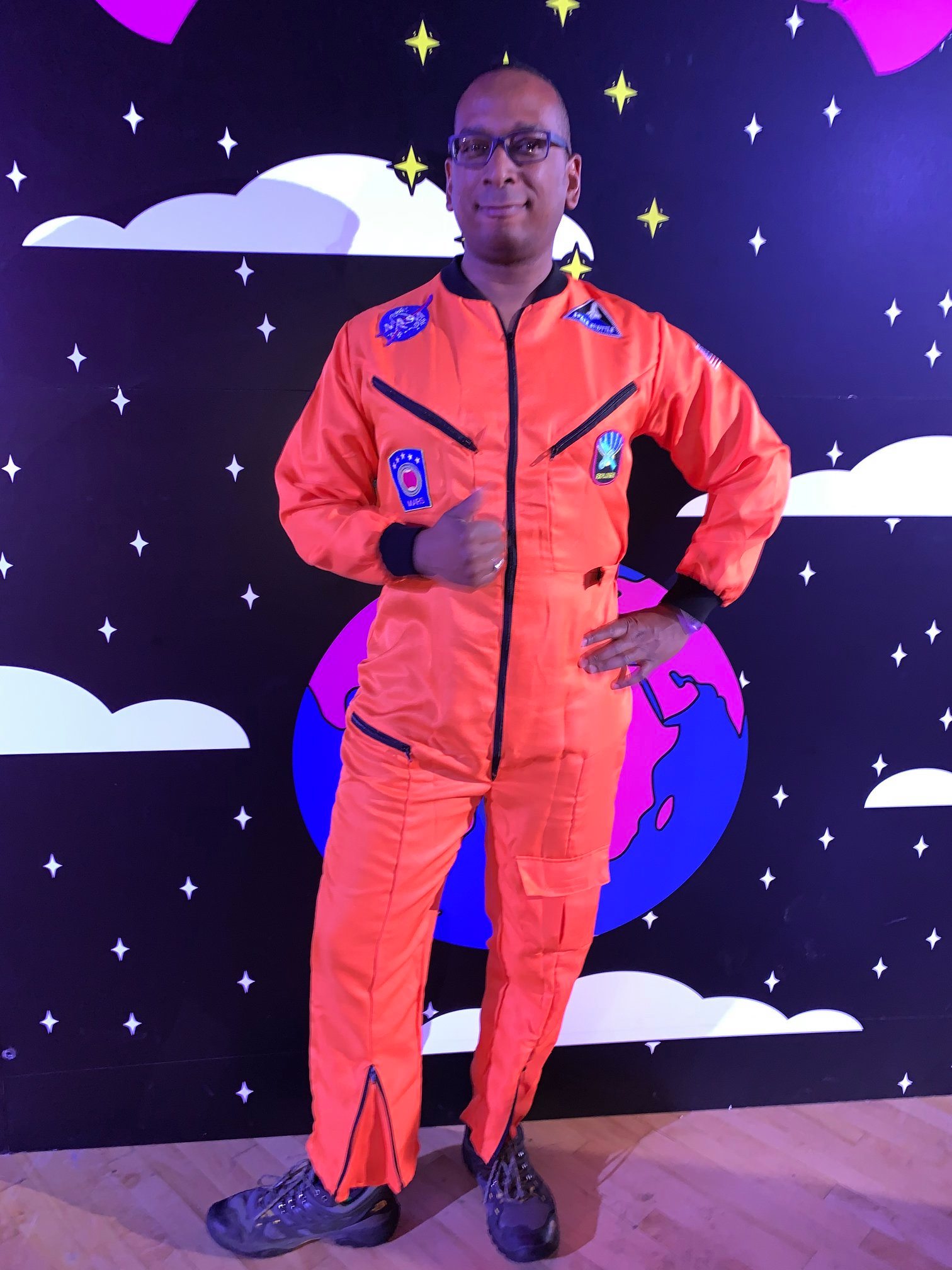
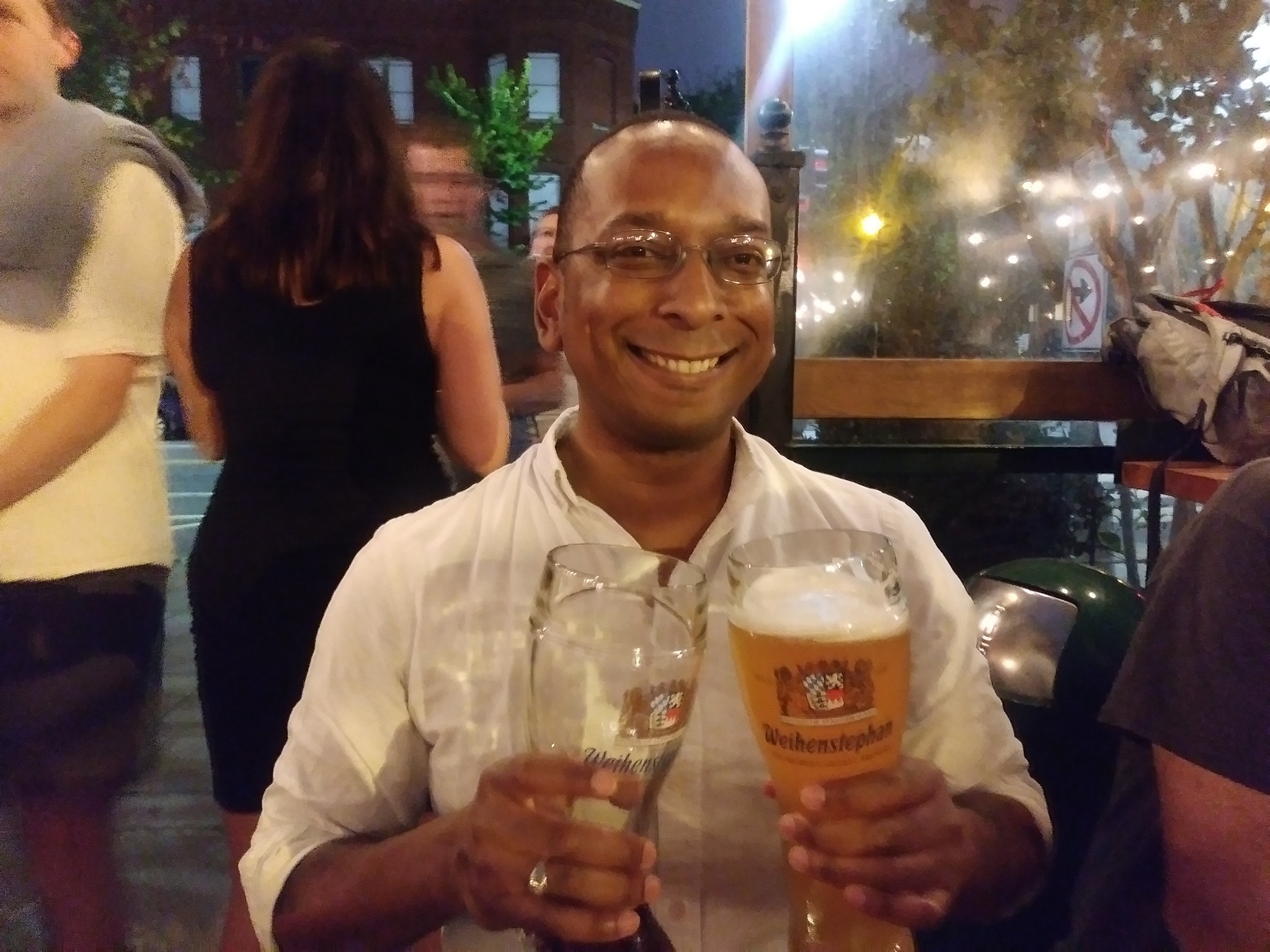
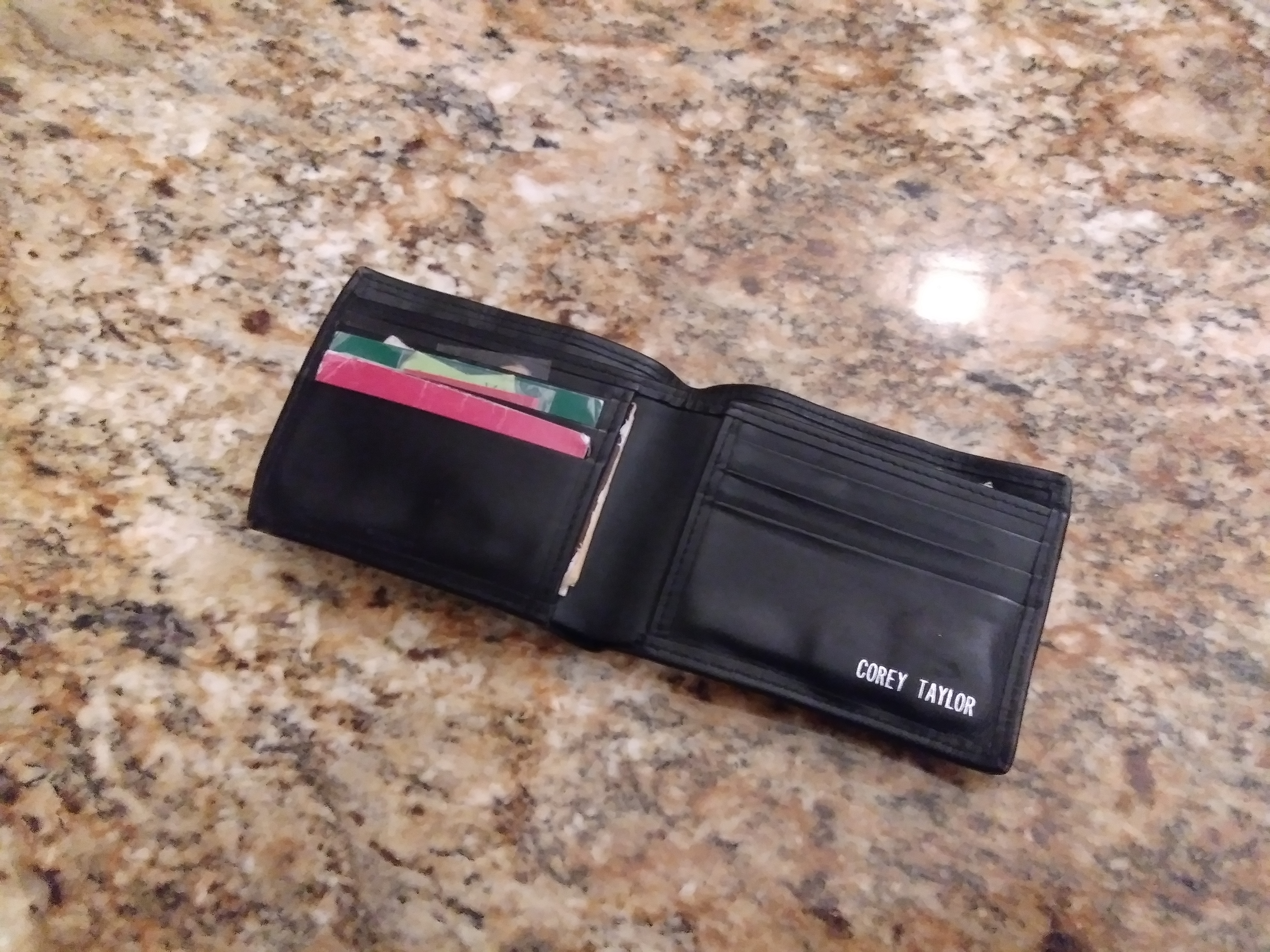 My housemate Tomas was the first to learn of my new writing job, and he became the first to offer advice on adjusting to the position. He knew I had spent days and evenings focused on my historical fiction manuscript. Some nights, often after midnight, he’d find me huddled over my laptop like an electric flame, punching out ideas from a time long past. He’d give me a pep talk, sip a glass of water, and return to sleep.
My housemate Tomas was the first to learn of my new writing job, and he became the first to offer advice on adjusting to the position. He knew I had spent days and evenings focused on my historical fiction manuscript. Some nights, often after midnight, he’d find me huddled over my laptop like an electric flame, punching out ideas from a time long past. He’d give me a pep talk, sip a glass of water, and return to sleep.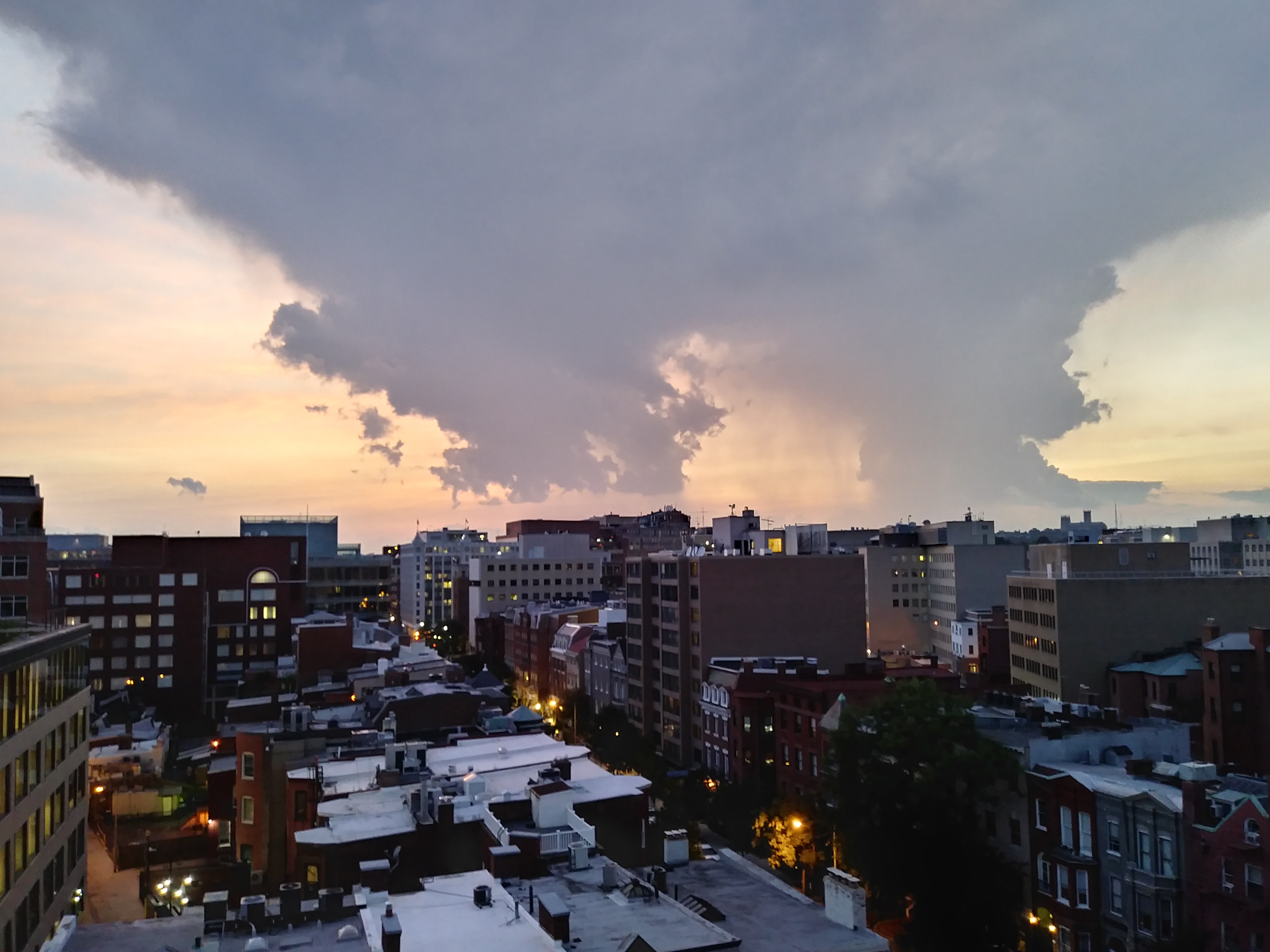

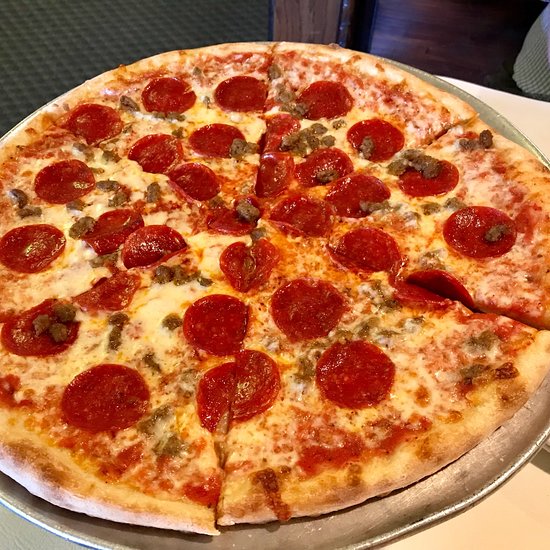
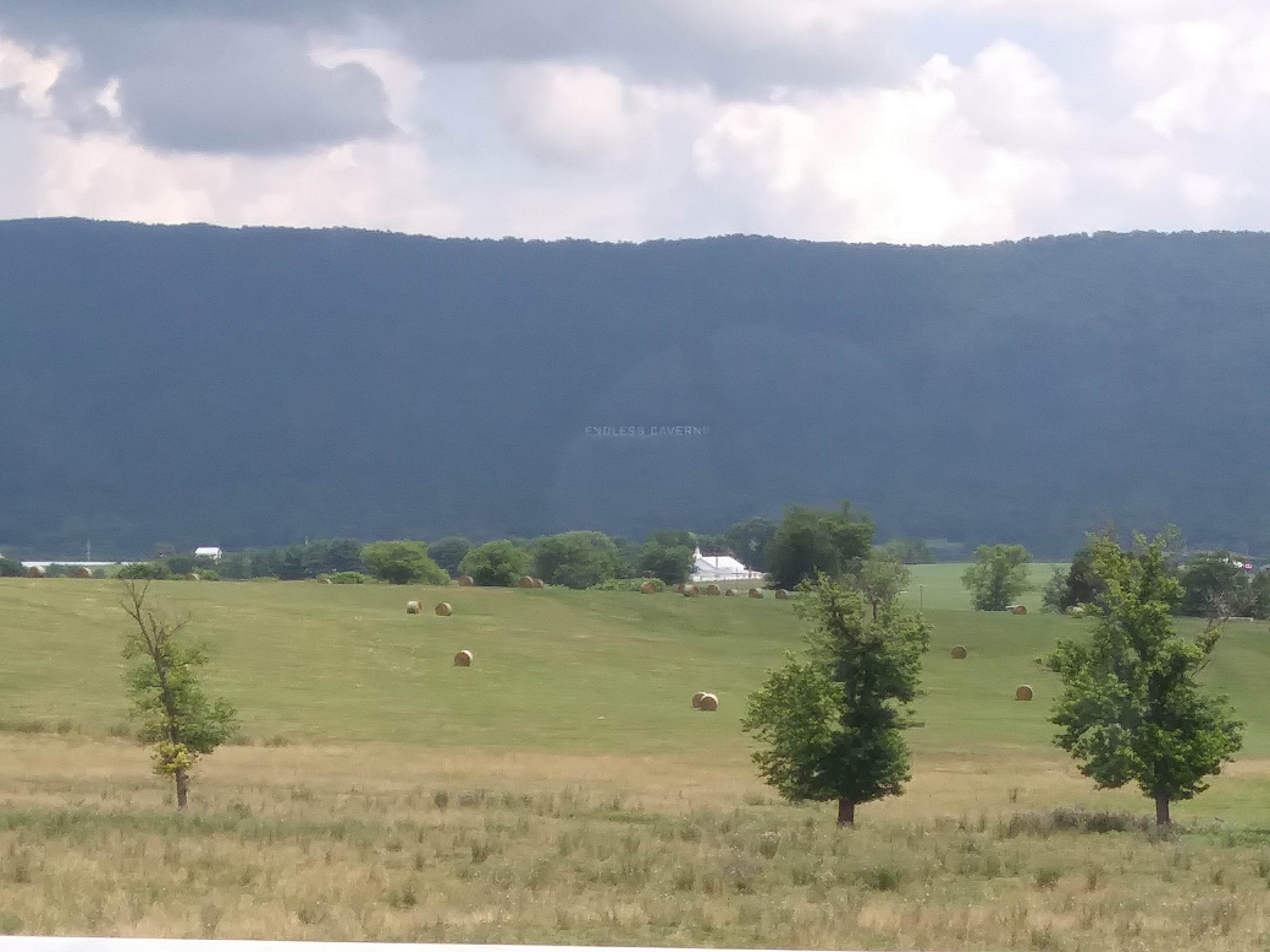 Back on the road, their car radio played pop music for as long as the signal permitted before buffeted by the Blue Ridge Mountains and obscure turns. The mountain range paralleled the highway like a sleeping Kaiju covered in trees from ground to sky. The clouds were equally monstrous and beautiful. Lacking man-made structures to obscure their glory, cumulus clouds swirled to the height of natural wonders that would dwarf a UNESCO World Heritage Site.
Back on the road, their car radio played pop music for as long as the signal permitted before buffeted by the Blue Ridge Mountains and obscure turns. The mountain range paralleled the highway like a sleeping Kaiju covered in trees from ground to sky. The clouds were equally monstrous and beautiful. Lacking man-made structures to obscure their glory, cumulus clouds swirled to the height of natural wonders that would dwarf a UNESCO World Heritage Site.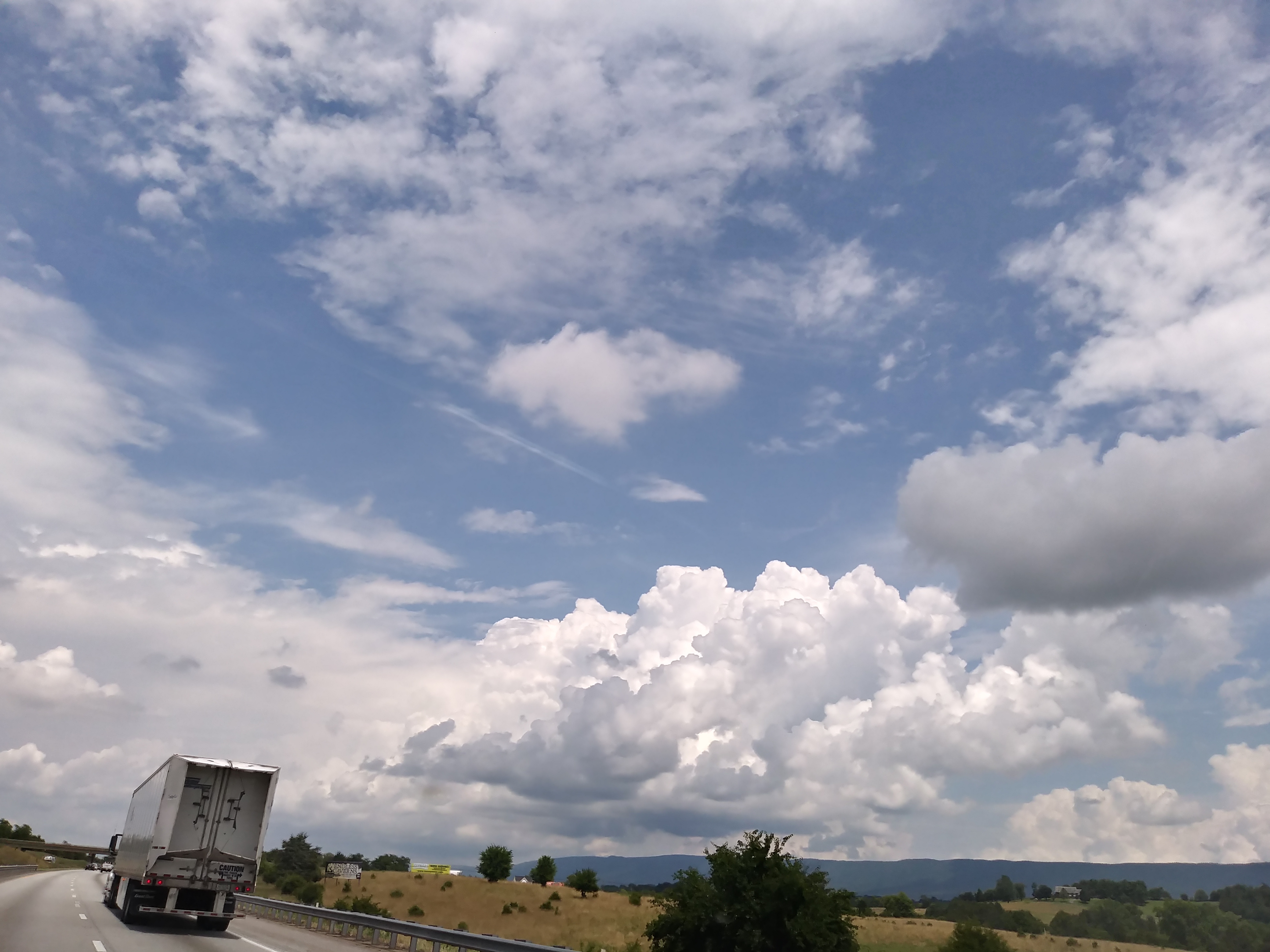
 Festooned upon the walls were portraits of Confederate officers, paintings of Confederate armies marching into towns, (with the requisite cheering Southern belles and locals), and a poem written in calligraphy, about Rebel patriotism. In each of the frames I saw little banners of Confederate war flags.
Festooned upon the walls were portraits of Confederate officers, paintings of Confederate armies marching into towns, (with the requisite cheering Southern belles and locals), and a poem written in calligraphy, about Rebel patriotism. In each of the frames I saw little banners of Confederate war flags.